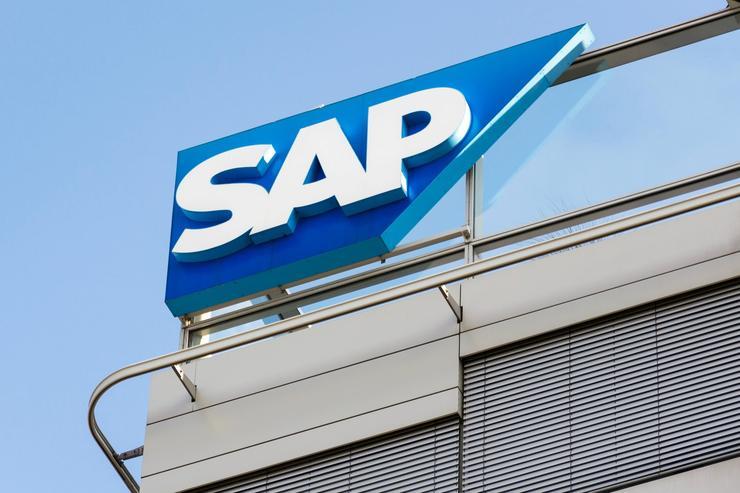 Credit: SAP
Credit: SAP
With the impending departure of longtime CEO Bill McDermott and two co-CEOs set to take up the reins, SAP is at a point in its ongoing evolution that should see it begin ramping up investment in partner enablement to sell its cloud solutions.
This is according to Technology Business Research (TBR) analyst Meaghan McGrath, who suggests that the German software giant’s efforts to develop a comprehensive cloud portfolio is nearing fruition, with the company well positioned to cash in on its efforts.
“With its cloud portfolio largely in place (though innovation, re-platforming and acquisitions persist), SAP is at the point in its transformation that requires it to invest in partner enablement to sell its cloud solutions and ongoing competitive innovation within its defined solution areas, and to do so with a focus on operating efficiencies,” said McGrath in a post.
McGrath’s opinion comes off the back of SAP’s announcement on 10 October that McDermott would not renew his contract and would step away from the company, making way for executive board members Jennifer Morgan and Christian Klein to step in as co-CEOs.
Morgan recently replaced Robert Enslin as the head of SAP’s cloud business following his departure in April, while Klein was the company’s COO.
According to McGrath, McDermott aggregated a portfolio, and now Morgan and Klein are well aligned to take that portfolio forward to achieve the goals, with the help of an invigorated C-Suite behind them.
Although McGrath also points out that Morgan was in her role as president of SAP’s Cloud Business Group for just six months between Robert Enslin’s departure in April to Google Cloud and her promotion into the role of co-CEO.
“We believe Morgan’s focus on sales and customer relationships as well as Klein’s strength in operations will be required to achieve SAP’s dual overarching goals: to grow revenue through sales and improve margins through operating efficiencies,” McGrath said.
News of McDermott’s departure comes several months after the company announced the appointment of COO Karl Fahrbach as its first chief partner officer, responsible for driving next-generation partnering at SAP.
Fahrbach’s responsibilities include evolving partner commercial models to intensify partner innovation, platform adoption and the sale of cloud solutions with partners across all customer segments and markets.
Fahrbach’s appointment came against the backdrop of SAP’s development of a next-generation ecosystem, which is intended to refine the partner experience and allow partners to innovate and develop their own IP on SAP Cloud Platform.
According to SAP, it is hoped the new strategy will free SAP partners from strict resale and implementation activities and offers them a broader role in helping customers become intelligent enterprises.
It is this kind of initiative, along with the broader development of SAP’s cloud-based offering, that sees the company poised to make a big impact in the global cloud solutions market.
According to McGrath, many of SAP’s big shifts and changes in the past year are aligned with the company’s goals as it transitions from a traditional software vendor to a cloud solutions provider.
With this in mind, McGrath makes the point that SAP would arguably have been well served by McDermott’s continued tenure as CEO to complete the technology transition to the HANA platform before departing.
However, Juergen Mueller, who was promoted from chief innovation officer to chief technology officer in January 2019 and SAP chairman Hasso Plattner, will likely both lend their technical leadership to ensure the smooth transition alongside the other business leaders.
Regardless, McGrath notes that with the change of leadership at SAP is the “capstone on SAP’s management realignment,” and suggests the announcement comes with a number of overt similarities to key ERP challenger Oracle, which revealed the unexpected leave of absence of Oracle co-CEO Mark Hurd in September.
While McGrath concedes that Oracle’s CEO announcement came as a result of very different circumstances to SAP’s -- even if it sees the German software giant adopt the co-CEO structure that Oracle has used so effectively over the years -- other similarities between the two companies may have greater meaning.
“The other similarity, which TBR believe is more noteworthy, comes from both companies’ ahead-of-schedule releases of quarterly earnings data in conjunction with their CEO announcements,” McGrath said. “When Oracle released its earnings on 11 September, one day ahead of its scheduled release and 11 days after the quarter ended, CEO Safra Catz underscored the speed with which Oracle was able to prepare its financial statements by running on its own Fusion ERP Cloud suite.
“Nearly a month later, SAP was able to close and prerelease its results in a 10-day window using its ERP solutions. TBR expects this move to prove critical for SAP, as SAP quickly rebutted what could have been used as a competitive proof point of the capabilities of Oracle’s ERP solutions."
This is, perhaps, just one reason among many behind McGrath’s suggestion that now is the time for SAP to make a move on meaningful investment in enabling its global partner ecosystem to sell its cloud offering into their respective markets.




